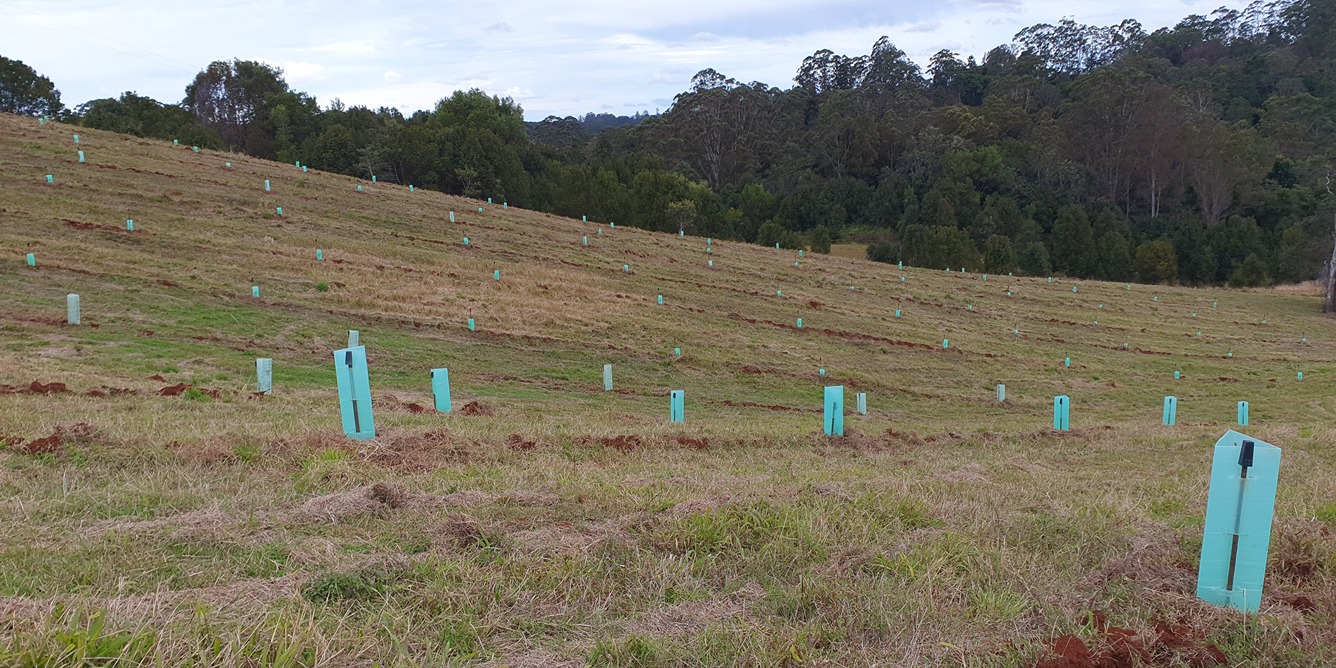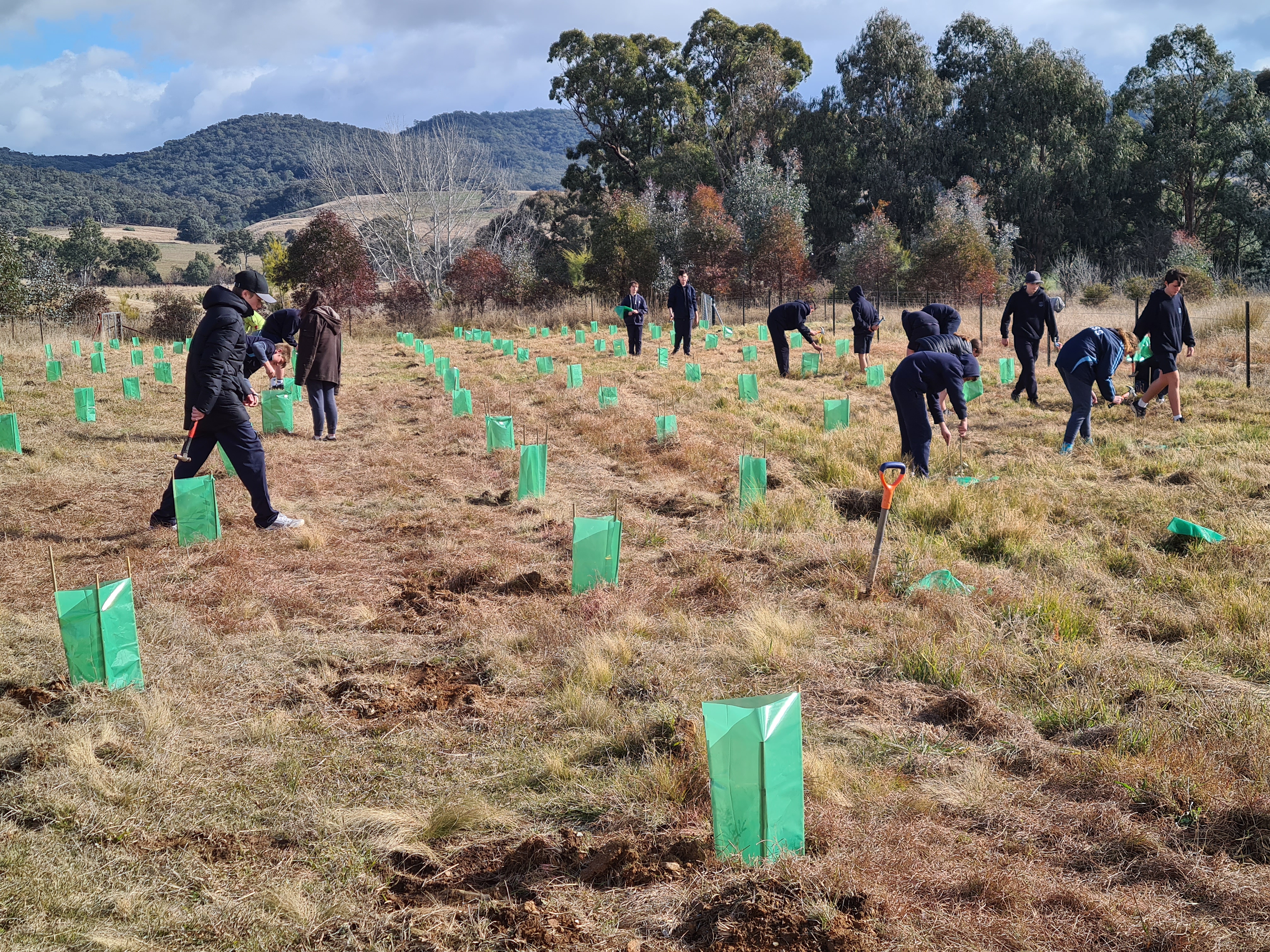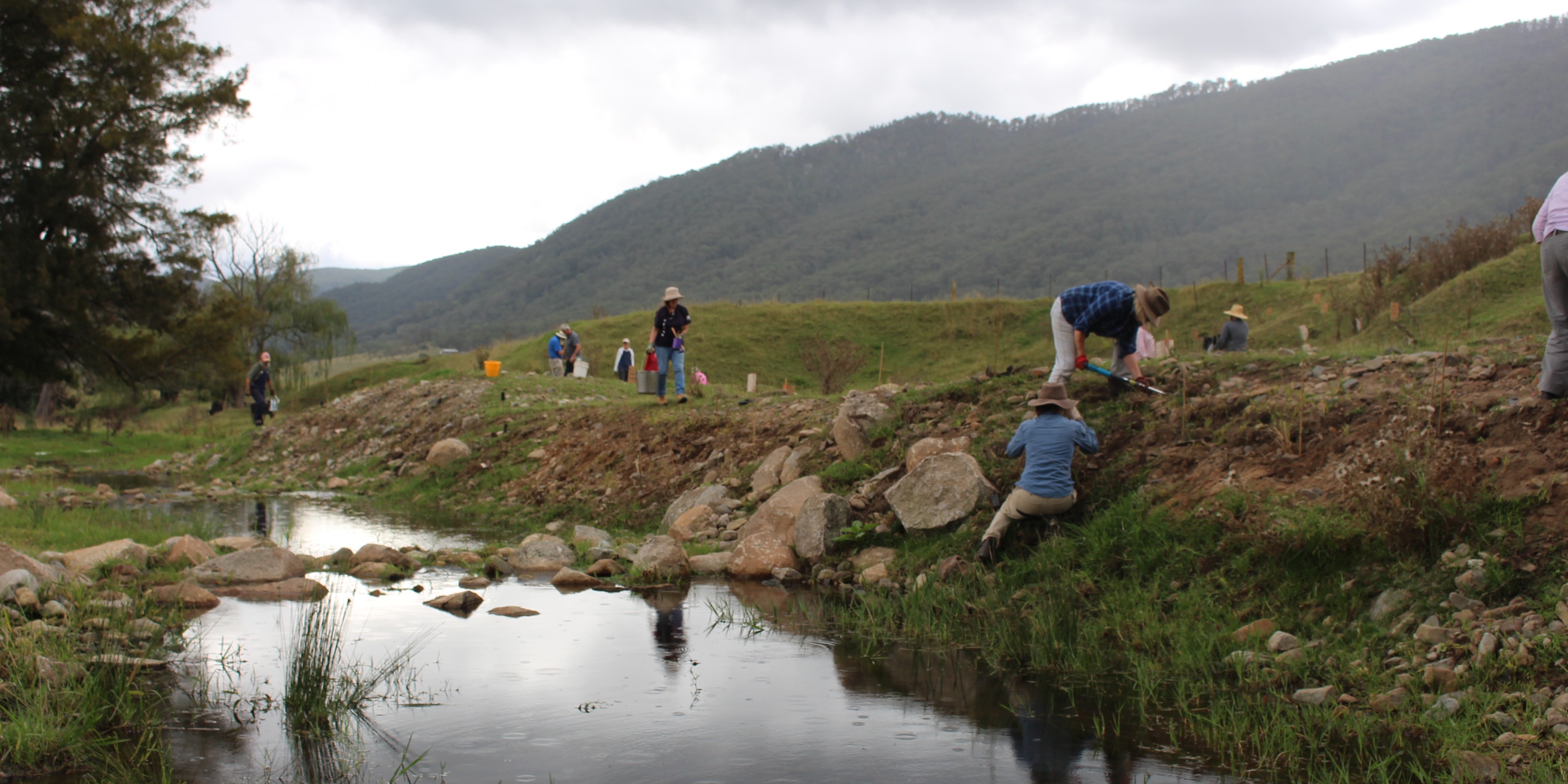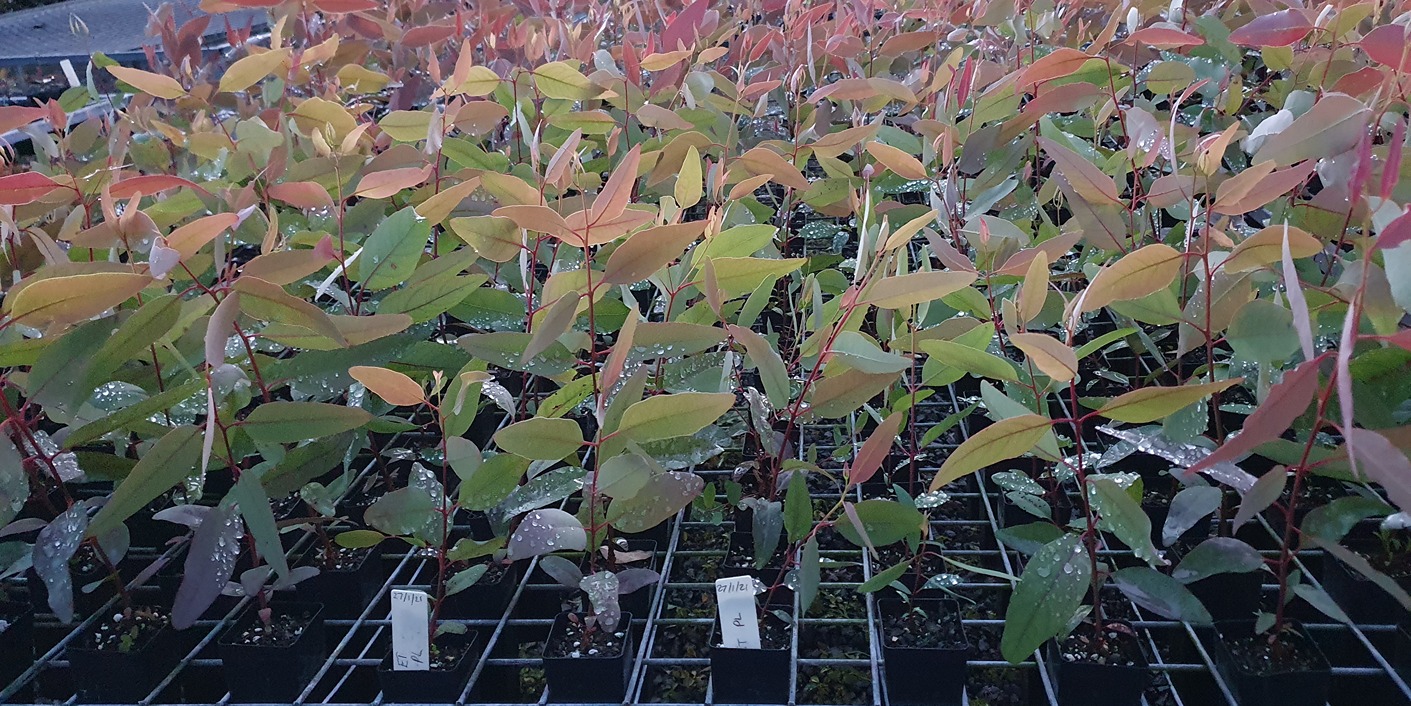About this case study
Heat
Communities
Research
The logic of traditional revegetation programs – that locally sourced seed has the best chance of survival – no longer holds true in a changing climate.
As our climate changes, we must adapt our revegetation activities. We can’t do things the same way in the future as we’ve done in the past.
Emma Stone, Landcare Coordinator, Border Ranges Richmond Valley Landcare Network
The Border Ranges Richmond Valley Landcare Network and Richmond Landcare Incorporated service a vast area in northern New South Wales. The geography extends across the Lismore, Ballina, Kyogle and Richmond Valley local government areas from Evans Head out to Rappville and up to the Nightcap and Border Ranges National Parks.
With the backing of Macquarie University and a grant from the NSW Government, the two Landcare groups embarked on an ambitious pilot project in February 2020 to test the survivability of several species.
The genesis of the project was the Climate-ready revegetation guide, which helps natural resource managers to use climate projections to consider the suitability of tree species for revegetation projects.
“There is a still a degree of uncertainty around exactly how vulnerable some species are to climate change. But as we know the climate is changing – and will continue to do so – we must prepare by adapting our revegetation activities,” says the Border Ranges Richmond Valley Landcare Network’s Emma Stone.
Taking an adaptation concept from idea to implementation is an ambitious undertaking – but 11 landholders from across the region put their hands up to take part in the trial.
“Some of the landholders were already reclaiming agricultural land for native vegetation; others were focused on linking biodiversity corridors. Every landholder was keen to be part of a research project to improve our understanding of resilience and adaptation,” Emma says.
The first step was to select species that would survive in hotter, drier conditions. The project team drew on several data sources. NARCliM data helped to identify projected climatic conditions. NSW Niche Finder was used to determine the distribution of recorded species and climate conditions at those locations. And the Atlas of Living Australia cross-referenced climate conditions and available seed source locations.
“Our initial aspiration was for 12 koala food tree species. But as we started to step through the process – to find available seed and to consider provenance areas – we realised this was too ambitious.”
The project team discovered some common koala food trees, like the Tallowwood, may not be a secure species in their region in the decades to come.
Eventually, the project team settled on five species, with four provenance samples of each. One provenance was locally sourced seed; the additional provenances were seed collected from healthy plants found in similar environmental conditions as the planting site. This gives new plants the best chance of survival in our current and future context.
A commercial nursery near Lismore was engaged to produce the trees and the seed-hunting process began. “When you are working in climate niches, you need to find the right locations for your target species and then ensure enough lead time to arrange for seed collection,” Emma notes.
“This is a complex planting project. It’s not just as straightforward as selecting species and then planting them. We need to monitor provenance types and how they perform over time – and that means we need to be able to revisit and monitor individual trees.”
The number of trees planted depends on the area, aspect and gradient. The smallest trial site so far is 60 trees, the largest 800. By maintaining consistency across the plantings, the trial will compare how well trees grow based on genetics of species, rather than site conditions.

One species, the Forest oak, was eliminated because its duration from seed to planting was four months longer than the other four species. “We hadn’t considered that some species would grow faster in nursery conditions than others, but that extra four months in nursery production meant reserving space and then returning four months later to fill the gaps, which wasn’t efficient.”
The project team has also had to ride the ups and downs of the Covid-19 pandemic, and various extreme weather events that had unpredictable impacts. Bushfires in another part of the state affected supplies of potting mix, slowing down the project. Then, the nursery nurturing the seedlings was hit by the February 2022 floods. “We lost three batches of seedlings from cattle grazing because fences were wiped out across the entire flood plain and stock got into the nursery.”
The extreme weather impacts are illustrative of the challenges that revegetation projects will face in the future, Emma notes. Consequently, the project has been delivered in a staged roll-out.
By October 2021, 810 trees across five sites had been planted, with a second tranche of five sites in August 2022. The project team has now begun the process on monitoring progress over five years – every three months for the first year and then annually.
“While this project has been challenging, the process is also getting easier as our systems evolve.”
This project is about thinking ahead and managing the extreme impacts of climate change. The more we tell the story, the more our community wants to engage in the conversation.
Emma Stone, Landcare Coordinator, Border Ranges Richmond Valley Landcare Network
The Climate Ready Revegetation Pilot Project is supported by the NSW Government’s Cultural and Ecosystem Adaptation Program.
Case studies
The Restore and Renew webtool provides simple, science-backed guidance to improve restoration projects across New South Wales. In the Hunter Valley, it is helping to rebuild climate-ready, genetically diverse populations of the River Red Gum.

The Yass Area Network of Landcare Groups is is using the Restore and Renew webtool to guide seed selection for their Climate Ready Revegetation Project.

